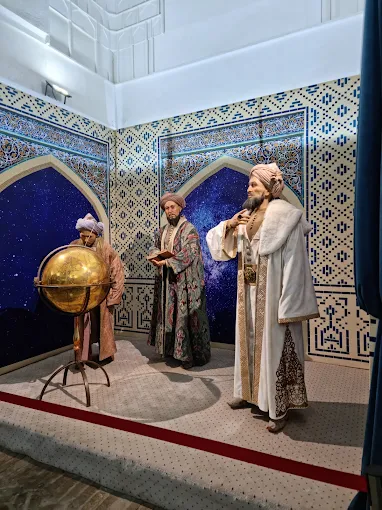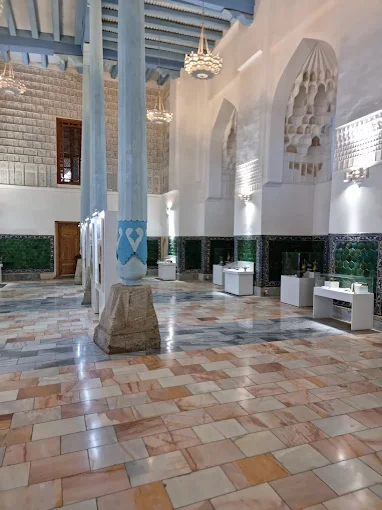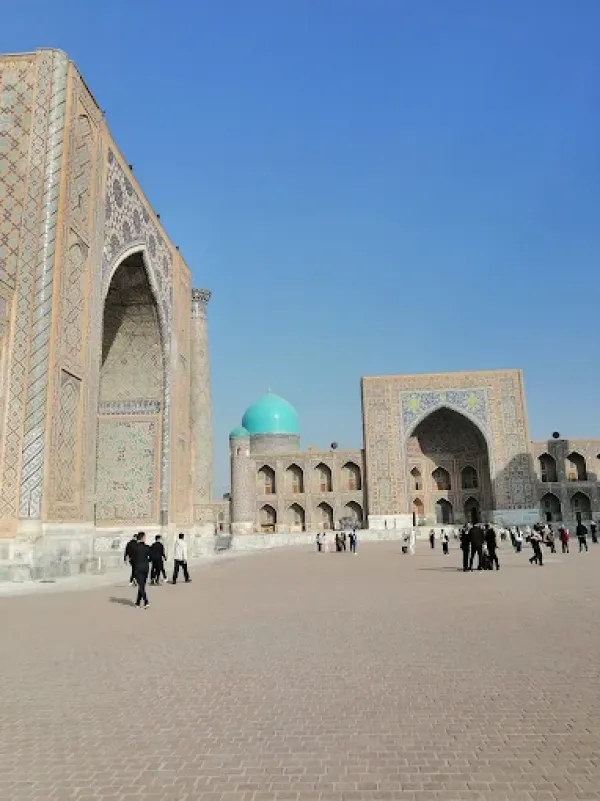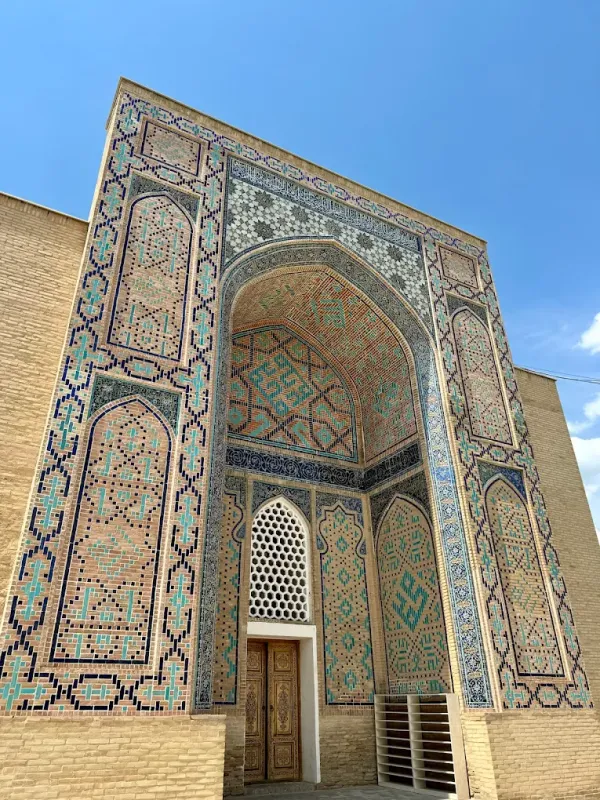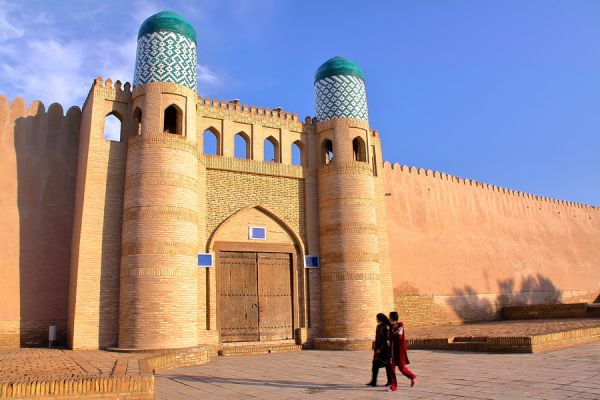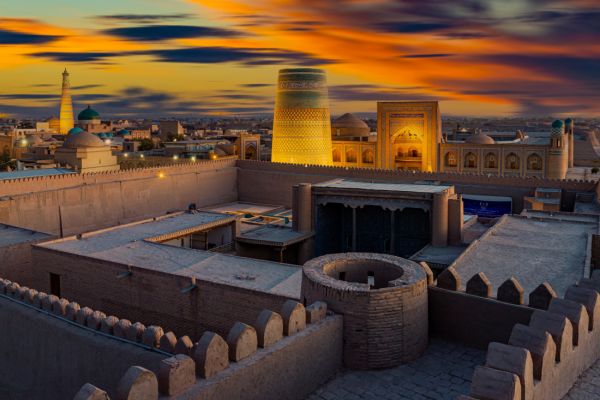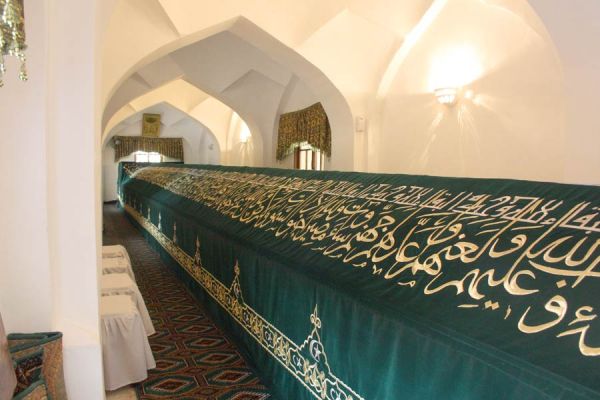Ulugbek Madrasah
Ulugbek Madrasah is the oldest in the Registan architectural ensemble in Samarkand. The construction of the madrasa began in 1417 during the reign of Ulugbek himself.
It is curious that Ulugbek's father renounced the throne in Samarkand and handed over the reins to his son back in 1409. At that time, Ulugbek, the grandson of Amir Timur, was only 15 years old. At first, he ruled Transoxiana with the help of mentors, and from 1411 he began to rule independently.
Ulugbek madrasah was immediately decided to be built on the western side of Registan, the main market square of Samarkand. At that time, there were covered trading houses, shops and caravanserais.
Some historians attribute the authorship of the madrasa project to the Timurid architect Qawam al-din Shirazi, others to Kamaleddin Muhandis. Anyway, the Ulugbek madrasah turned out to be very magnificent. There is an inscription on the entrance portal, made in 1417, stating that this is the most excellent and highest place in the world.
The walls of the Ulugbek madrasah are decorated with glazed bricks of blue, light blue and terracotta colors. The facade of the building overlooks Registan Square and has a peshtak (pointed arch) decorated with colored mosaics with star patterns. There are three entrances under the arch.
The construction of the madrasa was completed in 1420 and the madrasa almost immediately received the status of "olia", that is, the highest madrasa. The educational institution quickly gained fame as one of the best religious universities in the Eastern world. This status remained even after 1533, when Samarkand ceased to be the capital. Not only theology was taught here, but also mathematics, philosophy, and astronomy. The university's lecturers were well-known scientists such as Al-Qushchi, Al-Kashi and Ar-Rumi. Historians believe that Alisher Navoi and Abdurakhman Jami studied here.
Two-storey student hujras (cells) for one and two rooms, classrooms and a library were located around the perimeter of the madrasah. Inside there was a square courtyard with four iwans, paved with large stones. There was a winter mosque on the west side.
The madrasah had four domes and four 33-meter-high minarets. In 1870, one of the minarets fell. During the 8-magnitude earthquake of 1907, the Ulugbek madrasah received two large cracks, the minarets tilted, and the second floor on the east side was destroyed. Only two eastern minarets have survived to this day, which were straightened by specialists in 1932 and 1965.
